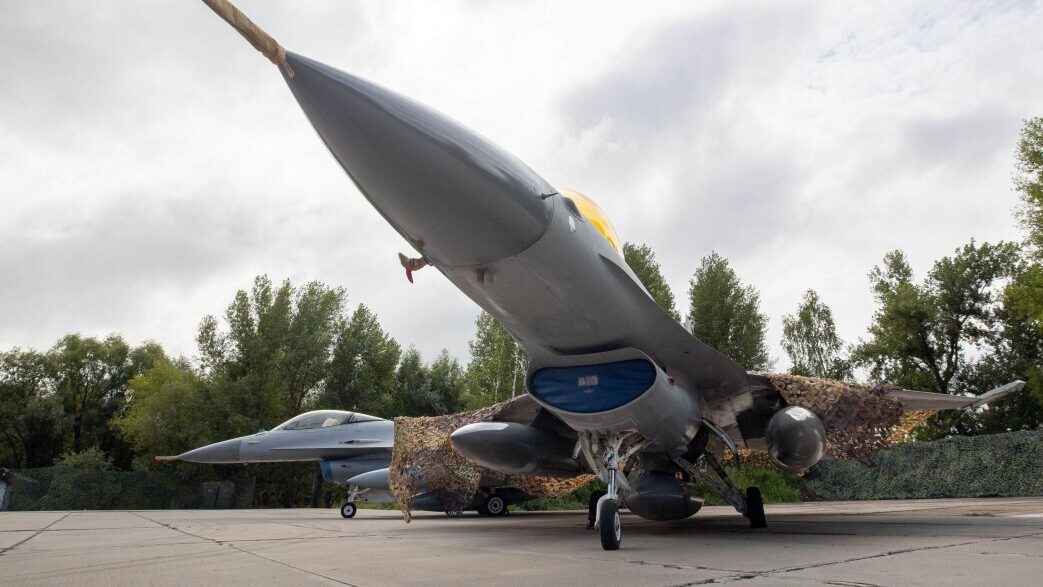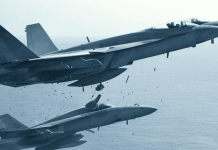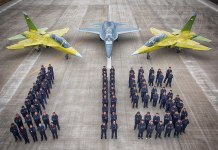A Ukrainian F-16 fighter jet crash that resulted in the death of pilot Oleksii Mes, known by the call sign Moonfish, in August 2024, may have been caused by friendly fire from a Patriot air defense system, The Wall Street Journal (WSJ) has reported.
The crash occurred just weeks after Ukraine received its first US-made F-16 fighter jets—a long-awaited addition to Kyiv’s air force aimed at strengthening defenses against Russian attacks.
Sources cited by WSJ suggest that the tragedy may have been caused by the absence of the Link 16 tactical network on the Patriot missile systems delivered to Ukraine.
Link 16 is a secure communication system that provides a real-time overview of military assets, including aircraft, ground units, air defense systems, and command centers. It plays a crucial role in preventing friendly fire incidents and improving pilot safety during combat operations.
When the first Patriot missile batteries arrived in Ukraine in April 2023, they were not equipped with Link 16 because, at the time, no one anticipated that Ukraine would receive F-16 fighter jets.
Dariia Kaleniuk, co-founder of the International Centre for Ukrainian Victory, told the newspaper that after Western nations approved the transfer of the F-16s, this oversight remained unaddressed, leaving the Patriots without the necessary system to identify friendly aircraft.
The report suggests that the absence of Link 16 may have been due to US reluctance to provide Ukraine with such a sensitive tool. The Biden administration has been cautious in its military aid to Kyiv, often limiting access to advanced technology or imposing restrictions on how certain weapons can be used.
Jillian Kay Melchior, the WSJ columnist who wrote the report, noted that Link 16 is a crucial but sensitive system, and Washington’s excessive caution may have played a role in its exclusion from the Patriots delivered to Ukraine.
When asked about the configuration of the weapons supplied to Ukraine, the Pentagon declined to comment, stating that it does not discuss such details and advising reporters to seek clarification from Ukrainian officials.
Meanwhile, sources claim that efforts are underway to address this issue, though they did not disclose specific details on how or when the problem will be resolved.
New Report Contradicts Earlier US Assessment
A newly emerged report on the crash of a Ukrainian F-16 fighter jet appears to challenge previous assessments by US officials.
Last year, US officials ruled out the possibility that a Patriot missile battery was responsible for downing the American-made aircraft, asserting that such an incident was improbable.
In fact, American and Ukrainian investigators considered multiple explanations for the crash, including mechanical failure or pilot error. However, as new evidence surfaces, the probability of a friendly fire incident seems to have increased.
This revelation raises alarm over the interoperability of Ukraine’s high-tech Western-supplied air defense systems and fighter jets, both critical in countering Russian aerial threats.
For Ukraine, effective coordination between its air defense assets and fighter aircraft is crucial in preventing friendly fire incidents, especially in high-intensity combat scenarios.

The night of the crash, Ukrainian pilot Oleksii Mes, call-sign “Moonfish,” and his squadron were reportedly engaged in intercepting incoming Russian cruise missiles. Such missions require seamless synchronization between fighter jets and ground-based air defense systems.
However, complications arose due to the absence of Identification Friend or Foe (IFF) systems in these engagements. IFF technology is designed to distinguish allied aircraft from enemy targets, reducing the risk of accidental engagements.
Ukrainian military analysts have previously pointed out that at the onset of the war, both Russian and Ukrainian forces operated similar Soviet-era aircraft, which increased the risk of misidentification.
As a result, neither side extensively relied on IFF. This practice has continued even after the arrival of US-made F-16s, raising concerns about potential misfires in joint operations.
Despite being a powerful addition to Ukraine’s military capabilities, the F-16s currently in service are primarily used for defensive operations rather than complex strike missions.
US and Ukrainian officials have repeatedly confirmed that these jets are largely restricted to air defense roles and avoid direct engagements with Russian fighter aircraft.
Vijiander K. Thakur, a retired Indian Air Force veteran and an expert on Russian military tactics, previously told EurAsian Times that Ukraine’s reliance on F-16s is a tactical adjustment rather than a game-changer.
“When your 70s vintage, single-engine, short-range fighter has little role to play operating against high endurance, far-seeing, long-range weapons-armed adversary fighters, this is how you cope,” he explained.
- Contact the author at ashishmichel(at)gmail.com
- Follow EurAsian Times on Google News




